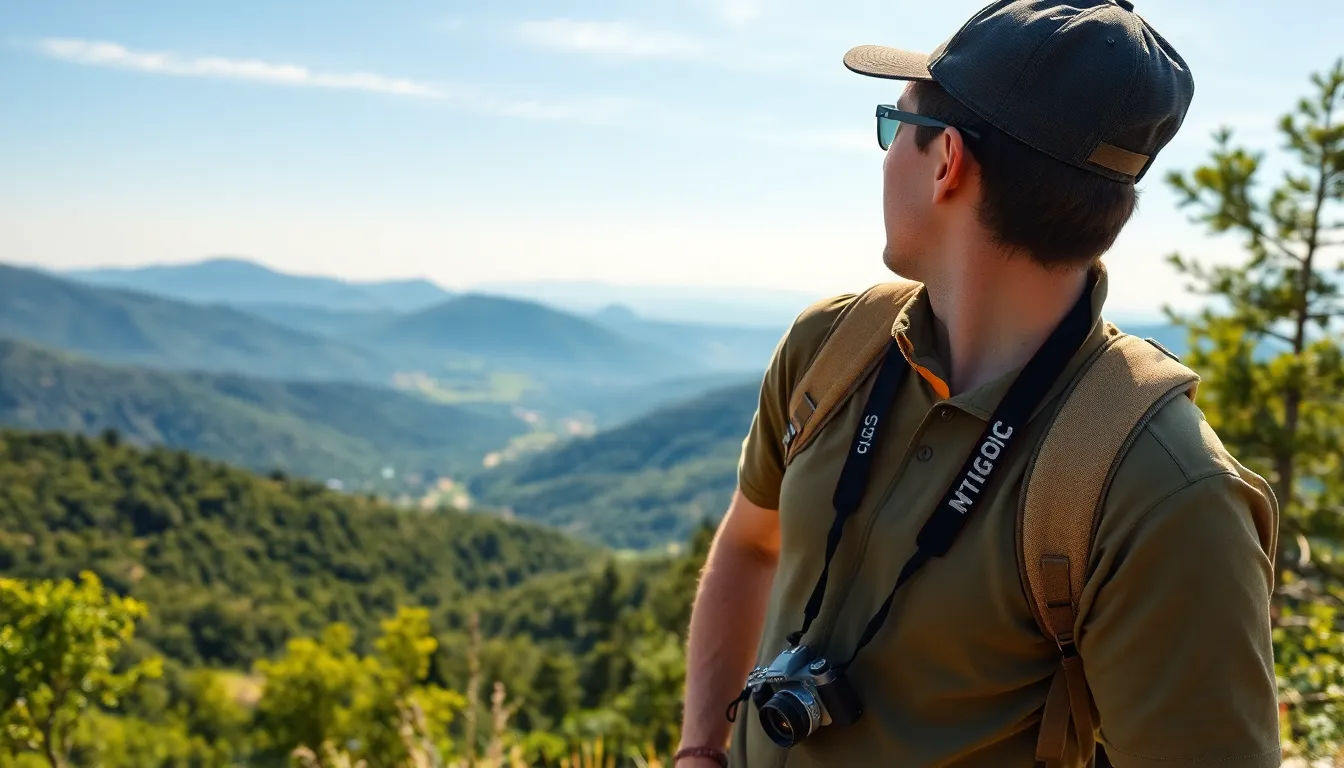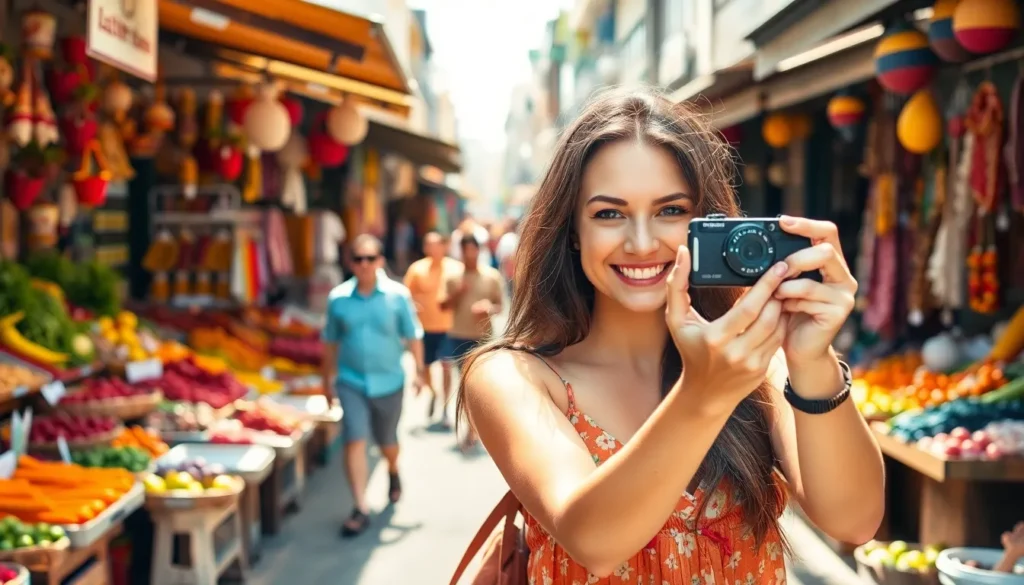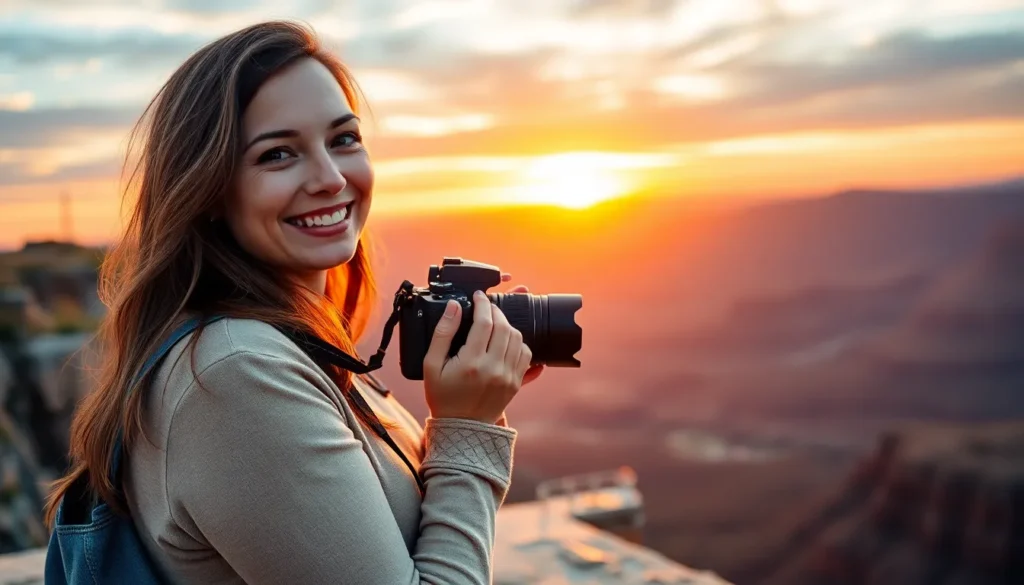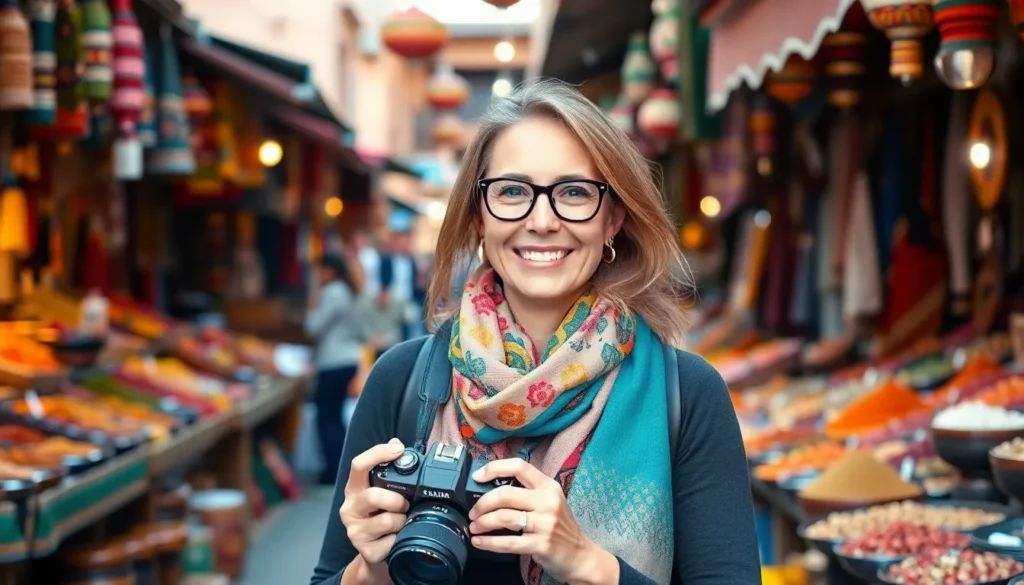Travel photography isn’t just about snapping pictures; it’s about capturing the essence of adventure, the thrill of new experiences, and maybe even that perfect shot of a pigeon stealing your lunch. Whether you’re a seasoned pro or just starting, the right tips can elevate your travel photos from “meh” to “wow!”
Travel Photography Tips
Capturing stunning images during travel hinges on preparation and technique. Always carry backup batteries and memory cards, as running out of power or storage can ruin a perfect moment. Use natural light whenever possible; sunrise and sunset provide the best illumination for vibrant photos.
Experimenting with compositions enhances storytelling. For example, position subjects off-center to create dynamic images. Including leading lines, such as paths or rivers, guides viewers’ eyes through the scene. Always take time to explore different angles; a low perspective can add depth to landscapes.
Utilizing a tripod stabilizes the camera, particularly in low-light settings. Many compact tripods fit easily into luggage and allow for sharper images. Understand your camera settings; mastering manual controls provides greater creative freedom.
Candid shots often capture authentic experiences. Encourage subjects to interact naturally with their surroundings, creating genuine moments. Don’t shy away from highlighting local culture; photographing local markets or street food adds richness to the story.
Remember to edit photos post-trip. Software options like Adobe Lightroom can enhance color and sharpness. Establish a consistent editing style to maintain coherence across your travel portfolio.
Capturing the essence of a destination requires both skill and patience. Prioritize these tips to transform snap shots into memorable images, encapsulating each adventure effectively.
Preparing for Your Trip

Preparation plays a crucial role in successful travel photography. Being well-equipped and informed can significantly enhance the quality of photos captured during the journey.
Choosing the Right Gear
Selecting appropriate gear simplifies the photography process. A camera with interchangeable lenses offers versatility, while a lightweight tripod stabilizes shots in low-light conditions. Including extra batteries and memory cards guarantees uninterrupted shooting. Lens filters improve image quality in various environments. A waterproof bag protects equipment from unexpected weather changes. Prioritizing compact gear reduces weight for easier travel.
Researching Destinations
Exploring destinations in advance enhances photo opportunities. Understanding local customs and traditions provides context for capturing culture. Identifying popular viewpoints ensures iconic shots are not missed. Utilizing social media platforms helps discover hidden gems. Detailed weather forecasts assist in planning the best times for photographing landscapes. Reading travel blogs offers insights into unique experiences. Awareness of local events can lead to candid photography moments.
Capturing Stunning Shots
Travel photography requires skill in both composition and lighting. These elements transform ordinary scenes into extraordinary images.
Mastering Composition Techniques
Positioning subjects off-center enhances visual interest. Implementing the rule of thirds guides viewers’ eyes. Experimenting with different angles adds depth and intrigue. Leading lines can draw attention toward the focal point, offering a natural flow to the photo. Including foreground elements creates layers, enriching the composition. Keep an eye on the background to avoid distractions. Each adjustment amplifies storytelling, turning simple snapshots into captivating narratives.
Utilizing Natural Light
Natural light plays a crucial role in photography quality. Early morning or late afternoon light, known as golden hour, creates soft and warm tones. Shadows can add depth, so consider them when framing shots. Avoid harsh midday sunlight that leads to washed-out colors. Find shaded areas for even lighting, which enhances details. Whenever possible, capture images facing the light source for a backlit effect that creates a halo around subjects. Every detail contributes to capturing vibrant and dynamic photos that evoke the essence of the destination.
Post-Processing Your Photos
Post-processing significantly enhances travel photographs, transforming initial captures into striking visuals. Effective editing polishes images while maintaining their authentic essence.
Software Options for Editing
Popular software choices include Adobe Lightroom, Photoshop, and Capture One. Automated features in these programs streamline editing for beginners and pros alike. Lightroom excels in batch processing, allowing for quick adjustments across multiple images. Photoshop provides in-depth editing capabilities and advanced compositing tools for complex corrections. Other alternatives, such as GIMP and Snapseed, offer free platforms with user-friendly interfaces, making image enhancement accessible to all.
Tips for Enhancing Images
Start by adjusting exposure and contrast to bring out details and improve overall balance. Saturation and vibrance adjustments enhance colors without oversaturating. Cropping images can help eliminate distractions and improve composition, focusing attention on the subject. Sharpening images adds clarity and precision to details, especially in dynamic scenes. Using filters for specific effects can create distinctive atmospheres, enhancing the narrative. Retouching blemishes or noise refinement helps maintain a professional look. Employ these techniques to create a cohesive travel portfolio that reflects personal style and adventure.
Sharing Your Travel Photos
Sharing travel photos effectively enhances the experience for others and connects with fellow enthusiasts. Select platforms that cater to visual storytelling and audience engagement for optimal sharing.
Best Platforms for Display
Consider Instagram as a primary choice for showcasing travel photography. This platform allows for vibrant visuals and extensive reach through hashtags. Flickr serves photographers who desire community feedback and interaction. Pinterest acts as a discovery tool, enabling users to explore various travel-related content. TikTok offers opportunities for dynamic short videos that capture travel experiences. Each platform caters to different audiences, so choosing the right one aligns with the desired recognition and engagement.
Engaging with Your Audience
Engage followers by sharing stories behind each photo. Inviting comments encourages interaction, fostering community. Regularly responding to inquiries generates deeper connections with audiences. Utilize polls and questions to prompt viewer participation, making them feel involved in the photography journey. Collaboration with other photographers or influencers strengthens visibility and appeal. Each engagement enhances the overall experience, transforming photos into shared adventures.
Conclusion
Travel photography is a powerful way to share experiences and connect with others. By applying the right techniques and preparation, photographers can elevate their images from ordinary to extraordinary. Embracing natural light, experimenting with compositions, and capturing candid moments all contribute to a compelling narrative.
Post-processing plays a vital role in refining these images, ensuring they reflect the true essence of each adventure. Sharing these photographs on the right platforms not only showcases talent but also invites engagement and community. With these tips in mind, anyone can transform their travel photography into a captivating visual journey that resonates with viewers.



